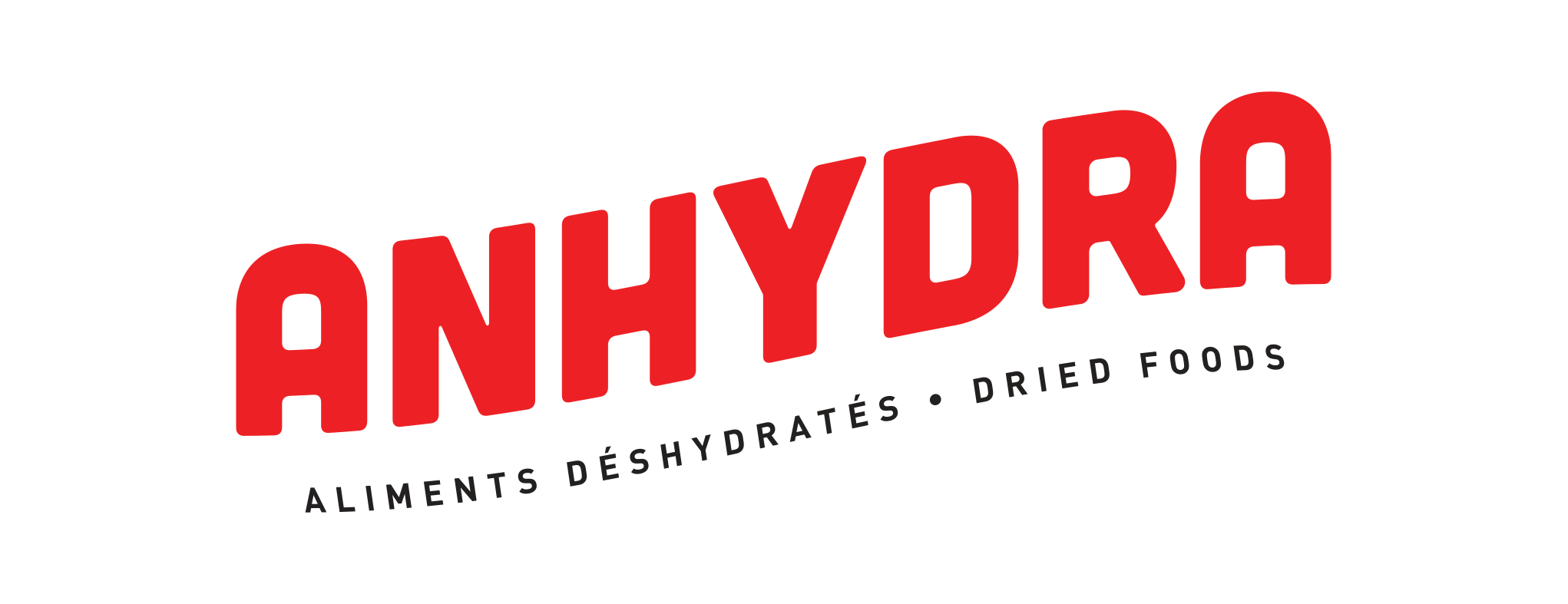Your cart is currently empty!
Dried fruits versus ANHYDRA dehydrated fruits
They’re a world apart! Why?

“A dehydrated fruit is a dried fruit but a dried fruit is not necessarily a dehydrated fruit. Everything depends on the quality of the drying process used.”
Conventional dehydration
At ANHYDRA, we use the conventional technique. It allows us to obtain high quality dehydrated fruits that are also good for one’s health. Its main inconvenience is time; a rather lengthy period is needed to get to the final product. That’s why many other techniques have seen the day to allow the production of dried fruits at a much quicker rate.
Dried in a few hours
The method most often used to dry a fruit in very little time is using heat at high temperature. At an elevated temperature, water evaporates extremely fast from the fruit. In contrast and because it is an accelerated process, this dehydration method leads to a greater loss of nutrients and flavours inherent to the fruit.
Another quick drying method used in the food industry is frying fruits. Such a process rapidly removes their water content. Dipped in hot oil at high temperature, the fruit is cooked and not dehydrated. You’ve probably guessed it. The result is a far cry from a naturally dehydrated fruit. And to top it all off, it’s much less nutritious and fat has been added to it!
Are standard dried fruits good for your health?
This should also be considered. When you use this type of dried fruits to create food products or put them in your recipes, you are also introducing other ingredients. In our experience, it’s clear that adding such dried fruits without knowing the exact quantities of sugar, oil or unknown preserving agents they contain, can greatly affect the taste and final product.
Above all, it’s important to check the list of ingredients and select the best fruits for your product!
Added sugar
Many dried fruits contain added sugar. They are dipped in sugary syrups before they are dried. Sugar is mainly used to enhance the flavour of the fruits. In some cases, using it equally makes the fruit texture more tender and extends its shelf-life. The result of added sugar? A candied fruit more candy than fruit!


Use of oils
Oil is mainly used for two purposes:
1. To cook the fruits
It’s the case with certain fruits such as bananas for which the drying process includes frying the food. Indeed, those dried bananas available on grocery store or supermarket shelves are fried in oil. Although sugar and artificial aromas are added to give them their banana taste, unlike the original fruit, they are hard, have little flavour and a high level of saturated fat.
2. To coat the fruits
Depending on the drying technique used, some fruits have a tendency to stick to one another after they have been dried. Oil is used as a coating to ensure they don’t become a compact mass in their package.
A dehydrated fruit is good naturally!
The natural dehydration process allows to extract the colour and flavours quickly and then obtain a very concentrated fruit without any water. Because the fruit is more tasty, a smaller quantity of the dehydrated food is needed for the results you’re looking for. In other words, for a superior result you’ll need a lot less naturally dehydrated fruits than the amount you’d require using market standard dried fruits. For creating new recipes and manufacturing food products, this is your best option!

Compared at a glance
- Slow drying process
- No added ingredients
- Natural fruit colours and flavours
- Conservation of most nutrients
- Fast drying process
- Added ingredients
- Artificial colours and flavours
- Great loss of nutrients
Another sign of quality is the cost of a product. In general, naturally dehydrated fruits are more costly than standard market dried fruits. Why? Because adding ingredients costs less than the time required for drying them. Real dehydration requires more production time, which is reflected in the price of the dehydrated fruits.
That being said, perhaps it would be more legitimate to ask why the standard market dried fruits are so inexpensive… Don’t you think so?
